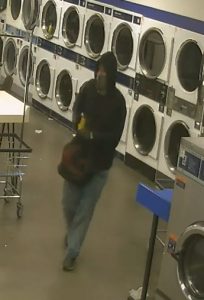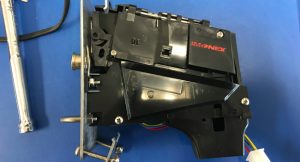Common Pitfalls to Avoid During Construction or Renovations
There are a number of items that can impact the construction or retrofit of a Coin Laundry.
The intention of this post is not to scare you but to make you aware of issues that need to be addressed.
If you are hiring your own contractors or purchasing a turn-key store your level of involvement with these issues will vary but they will help you understand the details involved.
• Not matching the store to the location. Sometimes the location won’t support a laundry as large as the owner wants to build, or the laundry is way too small for the location.
• Failing to secure the required permits. For your business to operate, a Certificate of Occupancy may be required by your city or town. So be sure to check. The permits that you and your contractor initially file with your local authorities are the documents which, when final inspections are completed, will facilitate your store’s being granted the Certificate of Occupancy. Make sure you receive and maintain copies of these permits. Contractors sometimes fail to file for such permits, even though they have collected the appropriate fees from you prior to beginning work.
• Improper equipment mix. It takes some experience to lay out a laundry correctly – the right amount and capacity of machines, along with ample aisle space, customer service areas, etc.
• Not making sure you have adequate utilities available. If you don’t have utilities close by, it can be almost impossible to open your laundry.
Your store’s utilities are the lifeblood of your business in many ways. After all, water, gas, and electricity are, in essence, what you are truly providing your laundry customers. Therefore, whether you are building a store from the ground up or converting an existing building into a self-service laundry, you’ll need to know whether you can get enough of each of these utilities to meet your business’ needs.
Typically, a letter to the utility companies that supply these essentials will be answered within four to six weeks (this will vary widely depending on area) and will provide you with information on availability, procedure, and estimated costs.
• An insufficient set of architectural drawings. Those drawings need to show isometrics of plumbing, plumbing sizes, electrical service, and ventilation. It shouldn’t be just a couple of pieces of paper scratched out showing some machines here and there. There should be some detail.
• Not having enough money left over for your grand opening. You can’t spend your entire budget on just the construction phase alone.
Money is not going to come in that fast when you first open up. You’ve got to have extra cash. Some people misjudge how much it really takes to get into a laundry. It’s very capital-intensive, even without owning the building – just the leasehold improvements are a big factor. And it’s not that easy to finance leasehold improvements. In fact, about one-third of the total cost of a laundry is those improvements you put in to make it a laundry.”
It’s not wise to attempt to get into this business on a shoestring.
When you build a new store, it needs to look like a new store. You don’t want to put in all new equipment and then have an unsightly or dim lighting.
• Creating bulkheads that are too narrow. Although you design the store mainly with the customer in mind, don’t forget about the person who must maintain your washers.
When designing a store, it’s always in the back of your mind that you’re making dollars per square foot, so you want to put as much money-making equipment into the available square footage as possible without compromising the workflow. However, in doing so, some laundry owners end up compromising the size of their bulkheads.
On paper, a three-foot bulkhead looks like it would be easy to get into to repair a machine. But the plumbing comes up through there, and pretty soon three feet doesn’t seem like all that much. In fact, four feet sometimes is not enough.
• Not allowing for a sufficient amount of makeup air. This will cause the dryers to run inefficiently and can even ignite a fire.
As a general rule, one square foot per dryer pocket is considered sufficient for the proper combustion of your dryers. However, falling short of this figure and depriving your dryers of makeup air is an all-too-common problem.
• Installing inadequate floor drainage. Floor drains are something that several laundry owners tend to skimp on, and it’s something you need to have. You’re in a place that invariably is going to have water on the floor – sometimes an inch or two – and you’ve got to have somewhere for it to go. Floor drains should be on a separate line than those that hook into all of the washers.
• Undersizing the utilities. The size of the gas line, power, water supply and drains may seem too big but you have to factor in the busy times. I have seen customers load four or five washers and hit the start buttons all at once. You don’t want to take 10 minutes to fill the washers because your pipes are too small. Your customers don’t want to wait and you want to get people in and out and free up the washers for the next customer.
• Shortchanging the project, as far as the quality and thickness of the concrete. “If you start bolting down machines to concrete that’s not the right thickness or quality, and the bolts start pulling up, you can have real problems.
• Inadequate floorplans. The flow of people is key in a Laundry. Is there enough room in front of the dryers for people who hang up items straight from the dryer? Will somebody loading a big washer be blocking the doorway? Review the floor plans with your distributor and anybody else that understands layouts.
• Working with uninsured contractors. There shouldn’t be anybody allowed to work on the project unless they have a certificate of insurance and workers’ compensation insurance, especially if the store is on the investor’s property. If there were to be some sort of accident or injury on the site, there could be a serious liability for the owner. Proper insurance is a must.
• Overlooking any toxins on the property. What’s the history of that location? Are there any toxins left over from a previous dry cleaning business or a former gas station? Do your research.
If you have any comments please post them below.
Ken




